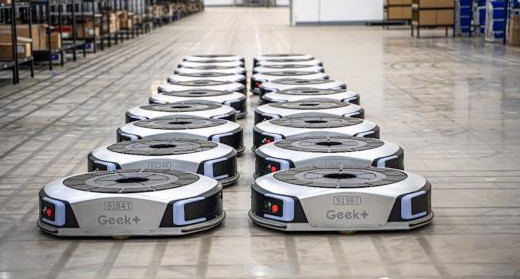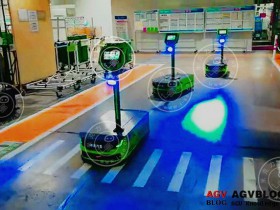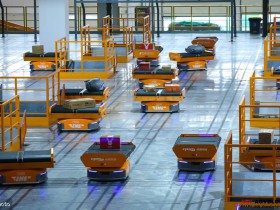In recent years, Chinese AGV companies have continuously moved to Japan and achieved breakthrough positions. On the one hand, the characteristics of the application scenarios have prompted Japan to develop its own unique AGC, and on the other hand, it has also restricted Japan from entering the high-end AGV field. Compared with the previous development of AGC, the AGV that is more suitable for complex scenes is obviously not the highlight of Japanese companies. The rudder of the times has changed. Can Japanese robots eat all the world?
In fact, due to the shortage of labor resources, Japan is also a big consumer of robots. With the

GEEK+ AGV
strong demand for e-commerce logistics, Japan's demand for modern warehouses is also increasing. It is reported that the warehouse area completed and used in Japan in 2017 reached 9.66 million square meters. By 2025, the Japanese new-generation logistics system and service market will be about 3.9 trillion yen, an increase of 89.1% over 2017. While the labor shortage cannot be resolved, the Japanese e-commerce market is expanding and the demand for automation is increasing. The use of AGC is limited by the times. Enterprises not only need a simple porter, but also need an intelligent logistics system expert who can accept a series of advanced response modes such as dispatching, remote monitoring, and information feedback. The work in the field of intelligence is by no means capable of AGC. However, currently Japanese companies are mainly active in the AGC market, and it is difficult to see them in the high-end AGV market.
On the other side, it is the quiet rise of China's AGV (AMR) robots. Whether it is e-commerce sorting, warehousing logistics or unmanned distribution, domestic AGV products have been in full bloom, and domestic AGVs occupy 90% of the domestic market share. According to statistics from the China Mobile Robot (AGV) Industry Alliance and the New Strategic Robot Industry Research Institute, in 2019, the China Mobile Robot (AGV) market size reached 6.175 billion yuan (including industrial AMR), of which companies with revenues exceeding 100 million yuan It has reached 18, and in 2019, more than 15 mobile robot manufacturers in China have gone abroad, and the Japanese market is an important segment for AGV manufacturers to deploy overseas. It is reported that the domestic AGV companies Geek+ Quicktron, CSG Huaxiao, Stander, etc. have all vigorously entered the Japanese market.
In 2017, Geek+ announced the establishment of a Japanese company in Inzai City, Chiba Prefecture, Japan to formally enter the Japanese market. Its ACCA project is also the first overseas "goods to man" robot warehouse for Chinese logistics robots. In 2019, its market share in Japan continued to remain the first.
Geek+ is favored by the Japanese market precisely because it breaks the "doing their own jobs" model that Japanese robotics companies have been using. It is understood that Geek+ is equipped with a professional solution, project implementation management and after-sales service team in the Japanese market, and can provide local Japanese customers with 7 × 24 hours after-sales service in Japanese to quickly meet customer needs and solve customer pain points . So far, Geek+ has served many leading companies in many industries such as shoes and apparel, food, automotive, 3C electronics, and retail, e-commerce and other business forms in the Japanese market.
Quick warehouse has also established a supplier called QT Japan in Japan, and received investment funds from Funai Soken Logistics, an Osaka consulting company in Japan. In 2018, Quick Warehouse started business through Quicktron Japan. The robot is planned to be used in logistics facilities such as e-commerce operators. In 2019, it will target 200 units in the Japanese market.
In addition to the e-commerce industry, CSG Huaxiao, who is deeply involved in the automotive industry, has also set up branches in Japan. Not only has its AGV been rated as an "outstanding service provider" and a "contract-honoring and credible" equipment supplier by Nissan, but also Upstream and downstream enterprises have launched close cooperation. And Stand Robot has also exported its OASIS series AMR products to Japan through cooperation with agents, becoming one of the earliest domestic companies exporting laser navigation autonomous mobile robots to Japan.
It is not difficult to see that no matter the technological gap or business model, domestic mobile robots (AGVs) have unlimited potential to enter the Japanese market. We also hope to see more companies representing "intelligent manufacturing in China" go abroad and receive trillion-level Japan. Logistics robot market cake.




